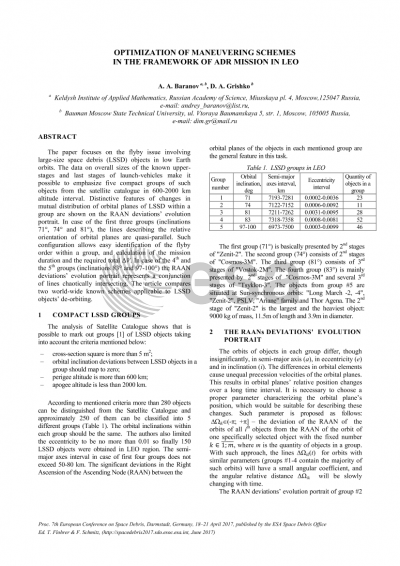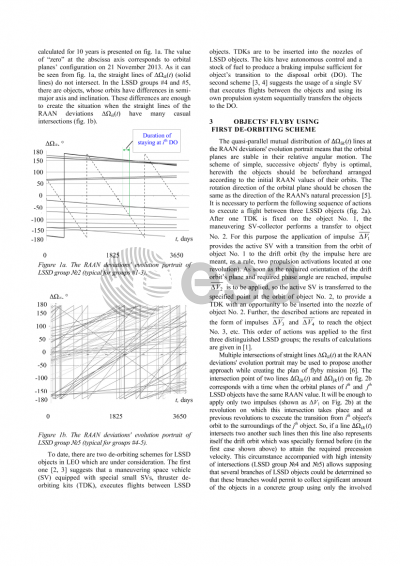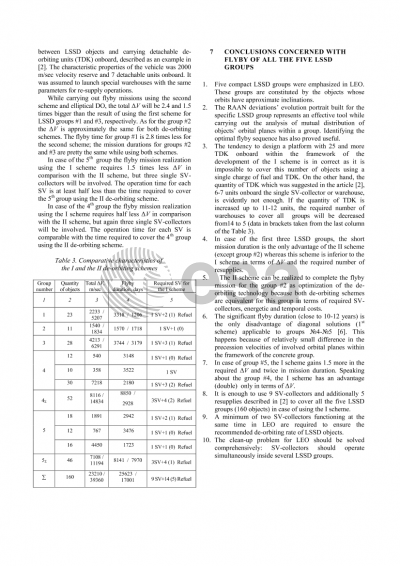Document details

Abstract
Many modern projects to clean near-Earth orbits from space debris are primarily oriented to large-size objects which are mostly presented by last stages of launch-vehicles while speaking about low orbits. The analysis has shown it is possible to single out 5 compact groups of large-size space debris (LSSD) in LEO. Each group is characterized with the proximity of orbital inclinations of objects which constitute this group (71°, 74°, 81°, 83°, 97°-100°). Inside a group the variation of semi-major axis is located in 30-90 km interval except group #5 (sun-synchronous orbits). Then the necessity of correction of the RAAN will be the most critical in terms of summary characteristic velocity (SCV) costs.
The direct corrections of angular difference between orbital planes will require the SCV costs which exceed the possibilities of modern space vehicles. That's why specially formed drift orbits should be used to reach the next object. During the fixed transfer time this drift orbit is to remove the deviation of the RAAN and the deviation of argument of latitude.
There are two known de-orbiting schemes for LSSD objects. They both deal with an active SV-collector which executes flights between the objects. The first scheme assumes an active SV equipped with detachable units (thruster de-orbiting kits, TDK) with their own propulsion and storage of fuel to perform a breaking velocity impulse. These TDKs are to be installed on the object to ensure its transition to specially calculated disposal orbit (DO). In case of the second scheme an active SV is to dock with an object and using its own propulsion transfers all the assembly into DO.
The RAAN deviations' evolution portrait can be used to optimize the flyby schemes. The RAAN deviations are calculated in time for all ith objects’ orbits relatively to the one (kth) object’s orbit in a group. In case of the first three groups the lines describing the RAAN relative deviations almost do not intersect in time. So the simple, successive flyby of group’s elements in the natural precession direction is effective.
In case of the fourth (i=83°) and fifth group (sun-synchronous orbits) the RAAN deviations' evolution portrait represents a combination of lines which intersect each other for many times. In the framework of the first scheme the orbit of one LSSD object simultaneously can serve as the drift orbit to attain another LSSD object; this solution requiring dramatically less SCV costs was called “diagonal”. In the context of the second scheme in case of 4th and 5th groups one should study changes in mission duration and in required SCV costs depending on catalogue number of the first object in a flyby order.
The presentation also contains a comparison of efficiency of two main de-orbiting schemes in terms of SCV costs, mission duration, quantity of re-fueling operations and maximum quantity of TDK onboard. The required life-time of an active SV and its necessary reserve of SCV costs for one fuel charge were determined.
Preview







